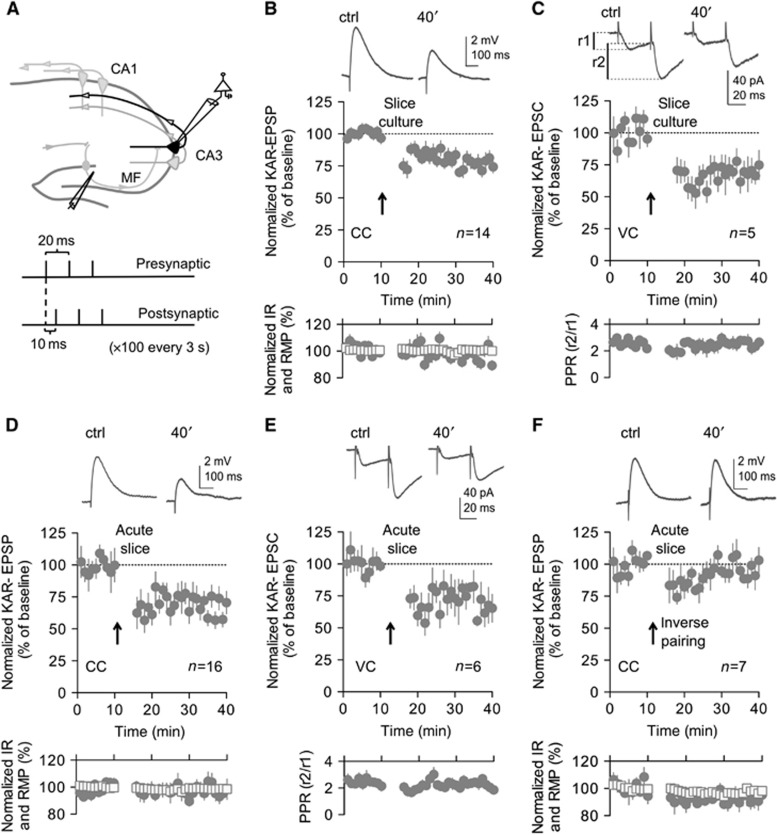Figure 1.
Repeated pairing of pre- and postsynaptic stimulation leads to KAR-LTD in slice cultures and acute slices. (A) Illustrative scheme of the hippocampus with recording and stimulating electrodes. Lower part, stimulating protocol used to induce KAR-LTD. (B) In slice cultures prepared from WT mice, in current clamp (CC) the STDP-like pairing protocol induces LTD of pharmacologically isolated (50 μM GYKI53655) KAR-EPSPs (74.4±5.0%, n=14, of baseline values 30–40 min after induction). (B–F) In the inserts are shown representative sample traces of KAR-EPSPs (or KAR-EPSCs) (10 averaged traces) before and after the induction protocol. (B, D, F) Input resistance (empty squares) and resting membrane potential (filled circles) remained stable throughout the experiment. (C) Time course of KAR-LTD recorded in voltage clamp (VC) (78.1±5.3%, n=5). No change in PPR (lower panels), indicating an absence of a presynaptic locus of expression for KAR-LTD (PPR of 2.6±0.8 and 2.6±0.3, respectively, during baseline and after LTD; n=5). (D–F) Experiments in acute slices prepared from WT mice (P17–19). (D) In the current-clamp mode, the STDP-like protocol induces LTD of KAR-EPSPs to a similar extent as in organotypic slice culture (65.6±4.0%, n=16, P<0.001). (E) KAR-LTD is also observed in the voltage-clamp mode (77.1±7.7%, n=6, P<0.01) and is not accompanied with changes in the paired-pulse ratio (PPR of 2.4±0.2 and 2.3±0.2, respectively, during baseline and after LTD; n=6). (F) Inverting the timing of the pre- and postsynaptic stimulation (the postsynaptic triplets preceding by 10 ms the presynaptic stimulation) did not lead to long-lasting changes in KAR-EPSPs (95.2±2.5%, n=7). Values are presented as mean±s.e.m. of n experiments.

